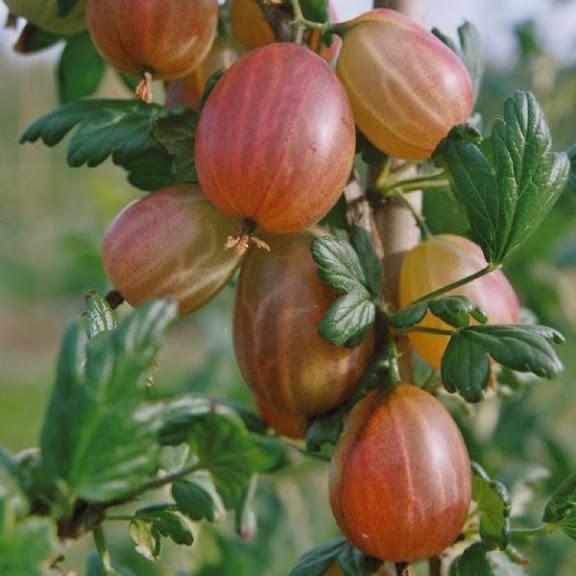Growing large gooseberries in the country
 Gooseberry is a berry that is grown throughout Europe. In Germany it is called a prickly berry, in France it is called a "fat man", and Italians are used to picking "grapes with bristles." In Russia, gooseberries or "bersen" have been cultivated since ancient times, but Russian gooseberry varieties were destroyed by powdery mildew. In the 19th century, Russia switched to the cultivation of varieties from the UK, these varieties were more resistant to powdery mildew and therefore survived. Breeders in the twentieth century began to develop new studless varieties. It is more convenient to harvest from such bushes, but the berries of the thornless gooseberry are smaller, therefore the gooseberry with thorns is considered large-fruited. But even these large-fruited varieties produce meager yields if grown incorrectly.
Gooseberry is a berry that is grown throughout Europe. In Germany it is called a prickly berry, in France it is called a "fat man", and Italians are used to picking "grapes with bristles." In Russia, gooseberries or "bersen" have been cultivated since ancient times, but Russian gooseberry varieties were destroyed by powdery mildew. In the 19th century, Russia switched to the cultivation of varieties from the UK, these varieties were more resistant to powdery mildew and therefore survived. Breeders in the twentieth century began to develop new studless varieties. It is more convenient to harvest from such bushes, but the berries of the thornless gooseberry are smaller, therefore the gooseberry with thorns is considered large-fruited. But even these large-fruited varieties produce meager yields if grown incorrectly.
Choosing a landing site
Gooseberry does not tolerate shade, so they plant it in a well-lit place. Getting more sunlight and heat, the shrub blooms and blooms faster. Also, the shrub cannot be grown in a wind-blown area, otherwise the heat-loving gooseberry flowers will fall off. Therefore, if you decide to plant gooseberries on your plot, choose a well-lit and wind-protected place.
Gooseberries, unlike currants, cannot be planted in the lowlands, because in the spring there are often frosts on the soil, and gooseberries are a thermophilic plant. Therefore, in the lowlands, gooseberries need to be planted in greenhouses.
Planting and leaving
Gooseberries are not picky about the composition of the soil, so they can give a good harvest, even if they grow on poor soils. If you add organic fertilizers to the soil, then the gooseberry berries will increase in size. To increase yields, gooseberries are planted in planting pits, which are filled with organic matter and mineral fertilizers. 5-6 kg of rotted manure, potassium sulfate and superphosphate are introduced into each planting pit. Gooseberries are planted in the spring when the air temperature rises to +5ABOUTC, you can plant it in the fall, but then the shrub takes root worse and gets sick more. Each shoot of a shrub grows from the root, therefore, for normal tillering, the root system must be buried 5-10 cm into the soil.
After planting, the gooseberries are pruned, leaving only one skeletal branch. This will speed up tillering and allow the still weak root system of the bush to develop faster. Pruning is done in the spring. In the first two years, only one skeletal branch is left.